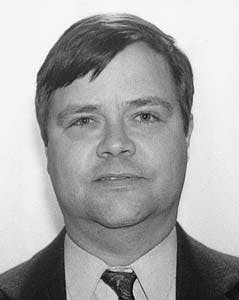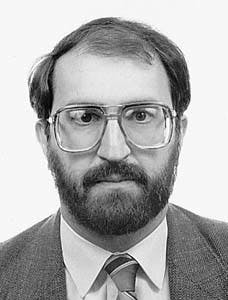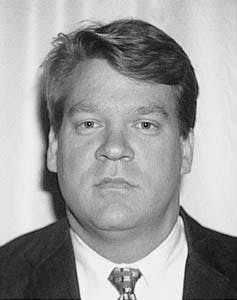EXPLORATION Here are analytical approaches for reserves replacement planning
Jerry Paul BrashearThis article concludes a three part series on reserves replacement planning.
The Brashear Group LLC
Potomac, Md.Alan B. Becker
Modern Energy Concepts
Jefferson City, Mo.Michael L. Godec Peter M. Crawford
ICF Resources Inc.
Fairfax, Va.
The first article reviewed the performance of 82 large U.S. based E&P companies and found that the larger they were, the greater their per barrel profitability but the lower their reserves replacement ratio, raising the question of whether long term viability (reserves replacement) conflicts with profitability.
The second article examined the difficulties in reserves replacement planning and the accommodations many companies make to overcome these difficulties-accommodations that tend to compromise reserves replacement decisionmaking. It concluded by suggesting an analytical structure that could contribute to improved approaches. This article describes those improved methods.
Structured planning
Developing a reserves replacement strategy can be viewed as structuring and solving the decision tree summarized in Fig. 7 (see Part 2). Development of some new analytical techniques and the reprise of some older ones make this approach practical.
Tools developed by a number of organizations can contribute to the overall solution. The approach is inherently embedded in the larger strategy of the company, so it begins and ends with strategic considerations. The approach is outlined in Table 3 [66408 bytes]. It consists of three phases that include seven steps. For clarity, the following emphasizes "systems/scenario models" defined below and summarized in Column A), leaving the portfolio approaches for later.
Step 1. Definitions and boundaries
The first step is to extract from the corporate strategy the definitions and boundaries needed to structure the analysis.
Four broad issues must be defined.
First, the measures of merit by which options will be appraised must be established. These can include any of those mentioned earlier or other criteria defined expressly to reflect strategic goals.
When multiple measures or criteria are necessary to capture the strategic purposes, one approach is to assign weights. If more than two or three criteria are desired, techniques such as developed by Saaty,3 Analytical Hierarchy Process (AHP), can assure logical consistency.
Another approach is to use multiple objective programming to find the "non-inferior" set of options rather than "optimum."4
A third approach would be to define some of the apparent objectives as constraints for a single-objective model.
Next, the strategic boundaries of the problem should be articulated. Some of these boundaries are obvious, e.g., the level of capital to be made available for reserves replacement over the planning period. Others are more subtle but direct reflections of the company's broader strategy or its competitive positioning; e.g., geographic, geological, or technological preferences or aversions.
Then, the scenarios that capture the alternative futures must be defined. These will establish opportunities and risks beyond the project level that could make or break individual projects' abilities to contribute profitable reserves. Peter Schwartz has contributed a step-by-step scenario development process.5 This step should not be underestimated.
As suggested earlier, the dimensions of scenario definition might include technology advances of various types, changes in transportation and storage infrastructure, demand, regulations, public policy by neighboring as well as U.S. governments, shifts in global market conditions or those in critical regions. Several organizations provide consulting services in scenario development for the oil and gas industry, notably the Global Business Network, Cambridge Energy Research Associates, ICF Kaiser International, and the Brashear Group, among others.
Lastly, one needs to establish the resources available for reserves replacement planning. These should include budget commitments for any outside data, consulting, software, and, most especially, time commitments from the executives and staff necessary to complete the job.
Step 2. Structuring.
Having defined the scope of the reserves replacement analytic problem, the next step is to structure a decision tree that organizes the assessment of a comprehensive set of reserves replacement options for direct comparison relative to the measures of merit.
The decision tree of Fig. 7 might serve as a point of departure for this structuring, but modifications for specific companies and strategies should be expected. Differentiating among reservoir circumstances, ownership options, and technological options clarifies important distinctions in the decision structure. The addition of the uncertain project outcomes and macro-level uncertainties would complete the tree.
Sorting reservoirs by their circumstances requires a characterization of every reservoir to be considered in the assessment. Only those that fall within the strategic boundaries, of course, need to be considered as options, although all reservoirs may be incorporated into the analysis to capture competitive issues.
For reservoirs owned by the company, the company's own files are usually the most detailed, even if not always readily accessible to the planning process. Reservoirs offered for sale can be characterized from offering documents or data rooms. These can be supplemented for other reservoirs by databases of reservoir properties maintained by NRG Associates, Dwight's Energydata, Petroleum Information Corp. (PI), and ICF Kaiser International.
The U.S. Department of Energy's Federal Energy Technology Center (FETC) is currently sponsoring the development of the Gas Information System (GASIS), by Energy and Environmental Analysis Inc., and a series of regional gas atlases by the Texas Bureau of Economic Geology and several state geologic surveys, that will complement commercially available data when released to the public.
Having assembled the relevant data on the known fields, it is possible to sort the fields according to ownership status and the level of deployment of the technology currently being used. The relevant future ownership options must include all the degrees of ownership that the company is willing to consider.
The technological options to be considered depend on the reservoir and fluid properties of the reservoir and its development and performance to date. Reservoir/ technology screening guides have been a staple in the literature since the early 1970s in enhanced oil recovery and often appear in technical articles or vendors' technical specifications.
The objective at this point in the approach is to define as comprehensive as possible a set of technical options, eliminating only those that are clearly technically unfeasible under the most optimistic technology advancements in this analysis.
Automated screening guides are maintained for both oil and gas by ICF Kaiser, for gas by S.A. Holditch and Associates and Advanced Resources International, and for oil by BDM-Oklahoma. Most major service companies and technology vendors can supply screening guides for their processes and products.
If a risk analysis is to be conducted, the distributions of important uncertain variables are defined at this point. These would include reservoir properties, technology performance characteristics (given those properties), and the costs of installing and operating these technologies).
The previous steps deal with known reservoirs, but additional structuring steps are required for the undiscovered reservoirs. The concepts of the geologic play and analogs permit undiscovered reservoirs to be described and analyzed as though they were known.
Plays are defined as groups of reservoirs created by a common set of geological events, including deposition, diagenesis, and structural deformation, and having common source rock, migration patterns, and seals; thus having a common geologic age, contiguous location, relatively similar properties.
Arps and Roberts6 noted that plays characteristically are discovered by finding the largest fields first and, further, have a distribution of reservoir sizes that is substantially predictable after the first few discoveries.7-8
By grouping known reservoirs into plays and estimating their size distribution and reservoir properties, reservoirs to be discovered in the future can be "described" in terms directly comparable to known reservoirs, so they can be analyzed by comparable technology and economic models. Depending on the level of resources committed to the analysis and level of sophistication desired, single-point estimates of reservoir properties with deterministic assessments or distributional estimates with probabilistic assessments (including the development uncertainties above) can be conducted as suggested by Newendorp.9
While there remains much art in play definition, a starting point to complement the company's internal resources can be found in the U.S. Geological Survey's comprehensive set of plays for the U.S.10 and similar definitions in several of the above databases, particularly that of NRG Associates.11
Step 3. Evaluation of each reservoir and prospect.
This step solves the right-most side of the decision tree by estimating the expected net present value, added-reserves-to-capital ratio, or other indices for each technology option for each reservoir.
Only those options with the highest value are accepted, setting aside any other technology option for the moment. With a large number of reservoirs, each with possibly several relevant technologies, the comprehensive, comparable evaluation could present a challenging combinational problem.
Fortunately, several suites of "mini-simulators" have been devised to assist with this problem. The U.S. Department of Energy's National Petroleum Technology Office (NPTO) commissioned SSI/Intercomp to develop a collection of "predictive models" for detailed technical-economic screening of oil reservoirs for tertiary oil recovery. These were adapted and improved in the 1984 National Petroleum Council's study12 and described in the literature.13-16
The models have subsequently been further enhanced and adapted for primary and secondary recovery by ICF Kaiser and BDM-Oklahoma. These models consist of five-layer stream-tube models that simulate the flow of fluids from injectors to producers in a one-eighth symmetry unit of a five-spot pattern.
The models (and variants) have been defined for pressure depletion, natural water drive, infill and horizontal drilling, waterflooding, miscible and immiscible gas flooding, surfactant and polymer flooding, and three thermal processes (in-situ combustion, steam "soak," and steam drive).
For gas, comparable suites of models have been developed. Among others, S.A. Holditch and Associates, and a team of ICF Kaiser and Advanced Resources International (under DOE/FETC sponsorship) have developed suites of "type curve" models that simulate the production of individual wells as a function of their reservoir and fluid properties and the stimulation, completion, and back pressure of the well.
The oil reservoir mini-simulators available from ICF Kaiser, BDM-Oklahoma, Scientific Software-Intercomp, among others, are integrated with project economics models that estimate the after-tax internal rate of return and expected net present value for each technology in each reservoir.
The gas models listed above also have been linked with similar project economic models. In both cases, the investment and operating costs of the specific technologies, as well as revenues, taxes, etc., are estimated and a net present value calculated, among other financial indicators. Distributions of uncertain factors can be incorporated to estimated the expected net present value.
Step 4. Optimization of the choices under this scenario.
The "best" technology for each reservoir (including continuation of the present technology) is now defined, as well as the capital requirement for implementing that technology.
The fourth step is to optimize the selection of these reservoir-technology combinations. This problem is amenable to a number of solutions that vary in mathematical sophistication from simple ranking to linear and dynamic programming. For simplicity, a ranking approach is discussed here.
Assuming the earlier definitional step suggested as a measure of merit to maximize the added-reserves-to-capital ratio (perhaps among others), the approach would rank the project options from Step 3 by the ratio of reserves added to capital committed, accumulating the capital requirement. The initial selection (the highest ranking) would be, first, all those for which little or no capital is required (e.g., the company's own reservoirs without any technological enhancement, proceeding in decreasing order of ratio) and then to all those that can be funded by the available capital.
However, changes in ownership can liberate additional capital, i.e., lower ranked projects in which the company already has an interest can be sold or farmed out to free capital that can then be allocated to the highest-ranking project that would not otherwise have been funded.
Theoretically, this cycle of "selling" the project with the lowest reserves-to-capital ratio while investing the liberated capital in the project with the best reserves-to-capital ratio that was not yet funded could continue until the last "sell" project and the last "invest" project had nearly identical reserves-to-capital ratios. This would have completely high-graded the buying and selling aspects of reserves replacement, as well as optimizing the technological options.
The result would maximize reserves additions given both the capital available and the properties available and the options considered under this scenario. More sophisticated mathematical programming solutions can consider more complex criteria and more constraints, but the logic is essentially similar to the ranking approach.
Many companies spread their project-level technical risk by spreading their participation across a large number of projects. This strategy is readily accommodated in the above approach by simply defining all of the relevant options in terms of this fractional ownership. A separate, portfolio analysis is needed to determine the optimal risk-spreading strategy, as discussed below.
Step 5. Repeat Steps 3 and 4 for other scenarios.
Step 1 included the development of a series of scenarios to capture the range of unknown futures that could materially affect the reserves replacement strategy, including changes in technology, infrastructure, markets, public policy, etc.
Scenario studies are usually applied to the broadest of strategic choices as "bet-the-ranch" decisions. With caution, this logic can be brought to reserves replacement planning. The individual scenarios must be refined to assess their impacts on the respective projects.
The most effective way to evaluate systematically and comprehensively the effects of alternative futures on reserves replacement choices is to analyze them through a "systems" model built expressly to incorporate the variations among the scenarios.
Under the sponsorship of the U.S. DOE/FETC, ICF Kaiser has built such a systems model for the U.S. and Canadian natural gas market. The Gas Systems Analysis Model (GSAM) simulates more than 16,000 reservoirs, the principal pipelines, processing and storage facilities, demand and the markets for gas. Changes in markets, technologies, regulations, policies, etc., can be directly modeled.
For U.S. oil reservoirs, the Tertiary Oil Recovery Information System (TORIS), developed by a combination of Scientific Software-Intercomp, ICF Kaiser, and BDM-Oklahoma under sponsorship of DOE's NPTO permits systems studies but only at the reservoir level, so it incorporates technology, regulations, and policy directly, but changes in markets, prices, and demand are reduced to price differentials.
TORIS is complemented by the Crude Oil Policy Model, sponsored by DOE's Office of Fossil Energy, a systems model that incorporates TORIS output into policy, regulatory, market penetration, and oil price studies. ICF Kaiser adapted the TORIS approach and added refinery and pipeline modules to model the oil sector of Ecuador.
The Hydrocarbon Model, developed by the Gas Research Institute in collaboration with Energy and Environmental Analysis Inc., and the North American Regional Gas model developed by Decision Focus Inc., are systems models that examine the affects of broad scenarios, but are not based on detailed assessments of real individual reservoirs.
Step 6. Definition of the most robust choices.
For each scenario, the reserves replacement options have been rank-ordered or otherwise optimized for that scenario. This step determines the optimum set of options across scenarios, assuming they are not mutually exclusive.
The search is for "robust" options, i.e., those that are the desirable choices regardless of the uncertain future. Some choices may be very attractive under some scenarios but become disasters under others, due, for example, to major shifts in markets or prices.
As with the simple scenario optimization, a number of mathematical optimization techniques might be applied, but a relatively simple ranking approach can also be used. For example, all the options that are selected for all the scenario-specific assessments are, by definition, the most robust. Due to the earlier steps, they also all fit within the capital constraint. Those selected for all but one scenario are the next most robust so would be ranked next, accumulating the capital obligated. The process continues until all capital is allocated.
Some analysts apply probabilities to the scenarios, while others insist that doing so reduces the inclination to examine each scenario individually and in depth. The end result of this step is the definition of the set of reserves replacement options that are optimal within one or more respective futures and are robust across a range of alternative futures.
Step 7. Review the indicated selections in the strategic context.
The foregoing analysis leads to an attractive set of reserves replacement options. Even while starting from an explicitly strategic context, the analysis itself often provides new insights that are strategically relevant.
The last step, then, is a review of the indicated option selections in the strategic context. Major financial commitments may require more intensive and thorough feasibility assessments than the above approach provides; new competitive or market conditions may be emerging even as the analysis is moving forward; early definitions of strategic boundaries and priorities may require re-examination.
This final step is the common sense review of the results of the comprehensive analysis and their reconciliation and integration with on-going corporate strategy development. It also permits development of "leading indicators," of the emergence of one or more of the alternative futures, and contingency plans to manage uncertainties through time.
This step is also an excellent time to critique the analytical and planning approach just used and to put in place the activities needed to overcome any revealed limitations for future planning cycles.
Portfolio theory
Portfolio theory provides a means for explicitly managing risk by diversification.
Portfolio theory sees risk as the dispersion, or variance, around the expected value of the project's return (or at least that part of the dispersion that represents the "downside" below a minimum acceptable financial performance, or semi-variance). As projects are combined into portfolios, the expected return of their combination rises as the sum of their individual expected returns.
If the projects are independent of one another, their risk (variance or semi-variance) combined increases less than the sum of their individual risks-the mechanics of diversification; if negatively correlated, more risk-reduction by diversification is possible. If, however, the project returns are positively correlated, less risk reduction is possible through diversification.
By considering the combined risks and returns of all possible combinations of projects (portfolios), the one which yields the maximum return for a given level of risk, the optimum, can be selected.
The systems/scenario approach can be extended to incorporate aspects of portfolio theory in either of two ways (outlined in Table 3). Both start out with the same first two steps as the systems/scenario approach. The "full" portfolio approach (Column C) proceeds by establishing probability distributions of the principal elements used to define the scenarios, e.g., changes in world oil price, gas demand, transportation and storage infrastructure, technology, regulations, tax policy, etc., and including these explicitly in the simulations through the "systems" model. This would add major uncertainty nodes to the decision-tree to represent these major contingencies.
This approach permits explicit examination of macro-level "system" or "market" risks that are often simplified as price uncertainty and analyzed at the project level. Because the impact of these factors can be subtle and non-uniform over all reservoirs and prospects, use of systems models allows explicit investigation of complex interdependencies not generally possible in available portfolio approaches.
The result is an optimization that explicitly reflects the reserves replacement risk-reward trade-offs and diversification options inherent in the full collection of reserves replacement options and their interdependencies that arise from uncertainties at the system or market level across the alternative futures considered.
The problem with this approach is that implementation without systems models is impossible and, even with the use of systems models, the amount of computation can become costly. An intermediate approach (Column B in Table 3) combines the systems/scenario analysis and portfolio theory approaches. Macro-level uncertainties are not incorporated as variables in the project simulations but are introduced through scenario studies.
A limited number of scenarios is analyzed in which each project is simulated in the systems model and an optimal portfolio is constructed for that scenario. The respective portfolios are then evaluated for the robust project selections. While this method lacks the theoretical "purity" of the full portfolio analysis and may fall short of full optimization, it remains practical and systematically incorporates the elements of risk of both the project and system level.
In either case, the portfolio approach can add significantly to the quality of reserves replacement planning, provided the data and computational resources are available. Recent contributions to the literature by Hightower and David,17 Edwards and Hewett,18 and Davidson and Davis19 have provided insightful ways of applying portfolio analysis methods to reserves replacement planning.
Whether or not a formal portfolio approach is used, the conclusion of the process includes Step 7 to bring closure and strategic continuity, and to generate systems to monitor events and leading indicators and contingency plans to facilitate active risk management over time.
Conclusion
A number of logical variations on the basic systems/ scenario approach are possible, with or without portfolio theory enhancements, to meet the specific requirements and styles of individual companies.
Use of a company's internal feasibility studies could permit an even greater level of detail and constructive interaction and facilitate an integration between the reserves replacement planning process and actual E&P operations.
National oil companies or government agenices could find this approach a constructive way to optimize a country's resource development, including various forms of private participation. Individual divisions or regions of large companies could use the approach in their own decisions, even if the overall corporate decisionmaking did not.
The systems/scenario approach, especially if integrated with portfolio analysis, is a useful guide to more informed decisionmaking, systematically incorporating more of the critical aspects of the problem than do many companies' present reserves replacement processes. It is no alternative to wisdom in the decisionmaking process. However, to the extent that the full approach is implemented, better reserves replacement decisions and outcomes can be expected as the primary limitations on reserves replacement analysis and planning are overcome.
The search for options is broadened and deepened; their evaluation is comprehensive and directly comparable; all reserves-addition strategies are examined in directly comparable terms; and risks are diversified and economics optimized and robustness in the face of uncertain futures. With this, reserves replacement and profitability objectives can be achieved.
Acknowledgments
The authors are grateful to their many clients over the years who have shared their experiences in reserves replacement analysis and planning and thus stimulated the thinking reflected in this article. They also thank Dr. Steven Gabriel for his management science insights, David Ribar for statistical assistance, and our colleagues who reviewed and criticized the draft. References are available from the authors.
The Authors
Jerry Paul Brashear recently founded The Brashear Group, L.L.C. Before that, he served as senior vice-president and director of the oil and gas consulting practice of ICF Kaiser International Inc. At ICF Kaiser and its predecessor, Lewin and Associates for 22 years he pioneered the use of integrated simulation of specific assets (reservoirs, pipelines, refineries, storage) as the basis for corporate, strategic, and policy planning. He holds an AB magna cum laude from Princeton University, an MBA from Harvard University, and a PhD in environmental and technology planning from the University of Michigan.
Alan B. Becker is president of Modern Energy Concepts, an oil and natural gas consulting firm in Jefferson City, Mo. He has over 15 years' experience in engineering and economic analysis, technology assessment, reservoir engineering, and modeling. Previously he served as a vice-president and senior consultant to ICF Kaiser and as senior reservoir engineer for Exxon Co., USA. He holds a BS in general engineering from the U.S. Military Academy.
Michael L. Godec is a vice-president of ICF Kaiser International Inc. and director of the firm's oil and natural gas consulting practice. For more than 14 years he has directed or performed development of analytic systems to evaluate oil and natural gas resources, technologies and economics, and associated regulatory and policy issues. These have been applied to support policy analysis, due diligence review, and strategic planning and activities. He holds a BS in chemical engineering from the University of Colorado and an MS in technology and human affairs from the Sever Institute of Technology at Washington University.
Peter M. Crawford is a project manager with ICF Resources. An expert in oil and gas technology transfer, technology policy, and industry economics, he has directed and/or performed oil and gas related studies with ICF Resources and its predecessor, Lewin and Associates, for 13 years. He holds a BSFS in international politics from Georgetown University's Edmund Walsh School of Foreign Service.
Copyright 1997 Oil & Gas Journal. All Rights Reserved.




